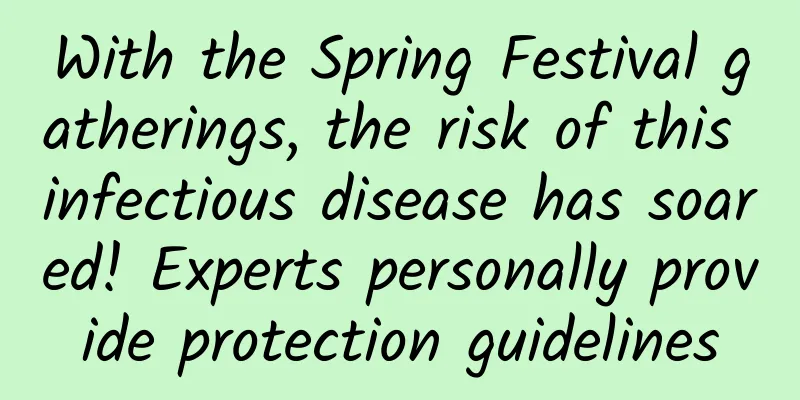Tea Science | What are the health benefits of tea?

|
Nowadays, tea has gradually become an indispensable element in people's daily life. According to a large number of scientific research reports, drinking tea is beneficial to human health. Tea contains a variety of functional ingredients, which are the material basis for the health benefits of tea. So what are the main substances? Let the editor tell you one by one. How much do you know about the beneficial substances in tea? Tea polyphenols and their derivatives Tea polyphenols are also called tea tannins and tea tannins. Its content generally accounts for 18% to 36% of the dry weight of tea leaves. Found in new shoots and various organs of tea trees It has very important physiological activity to the human body Polyphenols in tea have antibacterial properties And can remove excess free radicals in the body Tea polyphenols are rich in phenolic hydroxyl groups Able to bind to free radicals "Sacrifice the self for the sake of the overall situation" Achieve the effect of scavenging free radicals (Tea polyphenols) What are free radicals? Free radicals are the product of normal human metabolism. Under normal circumstances, free radicals are continuously produced in the human body and are cleared away by the antioxidant system. The free radical level in the body is controlled within a certain range and will not cause obvious harm to the human body. However, when certain external factors cause excessive free radical generation and the antioxidant system is unable to function, free radicals will gradually accumulate. Free radicals react with proteins, DNA, lipids, etc., damaging the body's normal functions, inducing diseases, and accelerating aging. Alkaloids Alkaloids in tea are classified into Caffeine, Theobromine, and Theophylline The highest content of caffeine Accounts for 2% to 4% of the dry matter of tea leaves Theobromine and theophylline account for about 0.05% and 0.002% respectively They all have the effect of stimulating the central nervous system Eliminate fatigue, refresh the mind and improve thinking Caffeine can stimulate gastric acid secretion and increase appetite Accelerate intestinal motility and improve gastrointestinal function (caffeine) Theanine Theanine is the main amino acid component in tea. Non-protein amino acids Currently, 26 amino acids have been found and identified in tea. Accounts for 1% to 4% of the dry matter of tea leaves Theanine is a "nerve relaxant" Enhances alpha waves in the brain Alpha waves can calm the mind and soothe the body and mind Tea polysaccharides Sugars also called carbohydrates It is the primary product of plant photosynthesis It is also a precursor for the synthesis of many other ingredients Tea polysaccharides are composed of sugars, pectin and protein. It is a biologically active substance in tea. Has antioxidant and anti-inflammatory effects Can regulate intestinal flora Control obesity Vitamins Vitamins are essential for maintaining human health. Trace organic matter Participate in regulating the growth, metabolism and development of the human body Can clear the liver, improve eyesight and relieve eye fatigue However, these substances cannot be directly synthesized in the human body. Must be taken from food Vitamin content in tea leaves accounts for % of dry weight of tea leaves 0.6%~1.0% Divided into fat-soluble vitamins and water-soluble vitamins Wait, here I want to know what fat-soluble vitamins are in tea? What water-soluble vitamins are there? The fat-soluble pigments in tea mainly include: vitamin A, vitamin D, vitamin E, vitamin K, etc. The water-soluble pigments mainly include: vitamin B1, vitamin B2, vitamin B6, vitamin B12, vitamin C, folic acid, biotin, etc. Mineral elements Tea contains essential Macroelements and trace elements Elements with a content of 0.01% or more in organisms We call this a constant element Elements with a content of less than 0.01% in organisms We call them trace elements How do we distinguish between the major elements and trace elements here? Phosphorus, calcium, potassium, sodium, magnesium, sulfur, etc. in tea are all macroelements, while selenium, fluorine, iron, manganese, zinc and iodine are all trace elements. pigment The many pigments present in tea leaves are called Natural Colors Some pigments are formed by oxidation during processing. According to the solubility properties of the pigment We can divide it into two categories: fat-soluble and water-soluble Fat-soluble pigments include chlorophyll, carotenoids, etc. Water-soluble pigments include anthocyanins, flavonoids and Oxidation products of catechins After reading this, will you be amazed that tea contains so many substances that are beneficial to health! So how do we drink tea scientifically? The editor will reveal it to you in the next issue~ Stay tuned! Source of this article: Zhou Zhixiu, Jiang Yongwen, Ruan Haogeng, "Tea Art Master Training Textbook Ⅰ" (China Agriculture Press, 2021) Some pictures are from the Internet Reviewers: Jiang Heyuan, Researcher, and Xu Yongquan, Researcher, Tea Research Institute, Chinese Academy of Agricultural Sciences |
Recommend
How to urge my period when it hasn't come yet?
Every woman has experienced irregular menstruatio...
What are the symptoms of pregnancy in the first few days?
For women, once they become pregnant, their bodie...
This "fever-reducing magic medicine" has been cancelled by the Food and Drug Administration! It has been banned in many countries before..
On November 12, the State Drug Administration iss...
Symptoms of pregnancy within 10 days
In daily life, female friends usually don’t know ...
What to do with vaginal bleeding in ectopic pregnancy
When it comes to ectopic pregnancy, we all feel n...
What are the items in the first checkup for pregnant women?
After a woman finds out that she is pregnant, she...
Is it good to have only the head sweating when practicing Tai Chi? What should I do if only the head sweats when practicing Tai Chi?
Tai Chi, a world-class intangible cultural herita...
What are the inspections for IUD insertion?
Many female friends think that IUD insertion is a...
Qi and blood deficiency and prolonged menstruation
If your period has not been clean for more than t...
What is the inflammation of foamy leucorrhea
Abnormal leucorrhea often refers to an increase i...
When is the ovulation period if the menstruation comes on the 23rd?
The ovulation period is relatively easy for most ...
Pain in finger joints after waking up from sleep
Women must take good medical care after giving bi...
Appearance of chancre
Syphilitic chancre is the main manifestation of p...
Sweating = detoxification and beauty? There is a kind of sweating that is very fatal. Knowing it earlier can save lives!
Hot! Hot! Hot! This year, hot and humid weather h...
I had black blood ten days after the abortion.
Abortion is very common nowadays, and it can caus...









